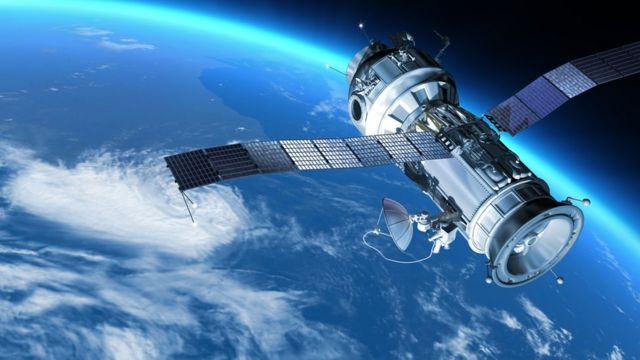Technology has advanced by leaps and bounds, and one of the most impressive innovations is the ability to transform smartphones into ultrasound devices. This technological revolution is changing the way healthcare professionals interact with their patients, making medical diagnosis more accessible and efficient. Integrating ultrasound apps into smartphones not only saves time but also expands the possibilities for medical care in remote or resource-limited locations.
These apps are designed to be intuitive, making them easy to use for healthcare professionals of different experience levels. With the combination of a connected transducer and an installed app, smartphones become powerful diagnostic imaging tools. This innovative technology is opening new paths in medicine, offering practical and effective diagnostic solutions at your fingertips.
Innovation and Accessibility in Modern Medicine
The arrival of ultrasound apps for smartphones represents a significant milestone in modern medicine. This innovation brings with it greater accessibility to imaging exams, which are essential in several areas of healthcare. Using these applications, it is possible to perform quick and accurate diagnoses anywhere, which is particularly beneficial in regions lacking advanced medical equipment.
1. EchoNous Uscan
EchoNous Uscan is a pioneering example in the field of mobile ultrasound applications. This app, combined with a handheld ultrasound device, provides remarkable accuracy in soft tissue, bladder, and kidney imaging. Its use is not limited to hospitals; Clinics and medical practices also benefit greatly from its portability and ease of use.
Uscan is particularly notable for its artificial intelligence, which helps interpret images. This makes it a valuable resource not only for ultrasound specialists, but also for general healthcare professionals who need fast and reliable diagnostic support.
2. Lumify by Philips
Philips Lumify is another revolutionary app that turns your smartphone into a high-quality ultrasound device. The application is known for its exceptional image quality and ease of integration with different types of transducers.
In addition to its superior image quality, Lumify offers an unprecedented connectivity platform, enabling easy sharing of images and reports with other healthcare professionals. This collaborative aspect is essential for rapid and effective diagnosis, especially in emergency environments.
3. Butterfly iQ
The Butterfly iQ is innovative as it is the world's first single-chip ultrasound transducer capable of performing the full spectrum of ultrasound exams. This application is a game-changer in the field of ultrasound, offering high-quality images with a compact, easy-to-use device.
The most notable aspect of the Butterfly iQ is its ability to offer a full range of ultrasound exams, from abdominal to cardiac and obstetric exams. This makes Butterfly iQ an indispensable tool for any clinic or hospital.
4. SonoAccess
SonoAccess is an application that stands out for its educational approach. In addition to providing ultrasound images, it offers an extensive library of educational resources to assist healthcare professionals in interpreting ultrasound images.
This app is ideal for professionals in training or those who want to improve their ultrasound skills. With an easy-to-use interface and a wealth of information at your fingertips, SonoAccess is a valuable learning and practice resource.
5. Mobilsono
Mobilsono is an application that combines efficiency and practicality, offering a robust solution for mobile ultrasound. With an intuitive interface and compatibility with a variety of portable ultrasound devices, it easily adapts to different clinical scenarios.
Mobilsono's flexibility makes it particularly useful for healthcare professionals working in a variety of environments, from urban clinics to rural communities or hard-to-reach locations.
Expanding the Frontiers of Diagnostics
The use of ultrasound apps on smartphones is expanding the frontiers of medical diagnosis. These apps are not just diagnostic tools, but also learning and collaboration platforms. With features like cloud storage, image sharing and integration with electronic health record systems, they are transforming the digital health landscape.
These apps are also democratizing access to ultrasound diagnostics, making it more accessible in regions with limited medical infrastructure. The simplicity and portability of mobile ultrasound devices open up new possibilities for medical care in remote areas and for patients who cannot travel easily.
Common questions
Q: Are cell phone ultrasound apps as accurate as traditional ultrasound equipment? A: Yes, many of these applications provide image quality comparable to traditional ultrasound equipment, especially when used with the appropriate transducers.
Q: Can these apps be used by anyone? A: Although the apps are designed to be intuitive, proper use and interpretation of ultrasound images requires specific medical training and knowledge.
Q: Are ultrasound applications safe? A: Yes, these applications are developed with strict security and privacy standards, ensuring patient information is protected.
Q: Do cell phone ultrasound apps work on all smartphones? A: Although many apps are compatible with a wide range of smartphones, it is important to check the specifications of each app to ensure compatibility with your device.
Conclusion
Ultrasound mobile apps are a remarkable advancement in the healthcare field, offering powerful medical diagnostic tools at your fingertips. They represent a significant step toward a future where medical care is more accessible, efficient and collaborative. As technology advances, we can expect these applications to become even more integrated into medical practice, transforming the way we care for healthcare around the world.


